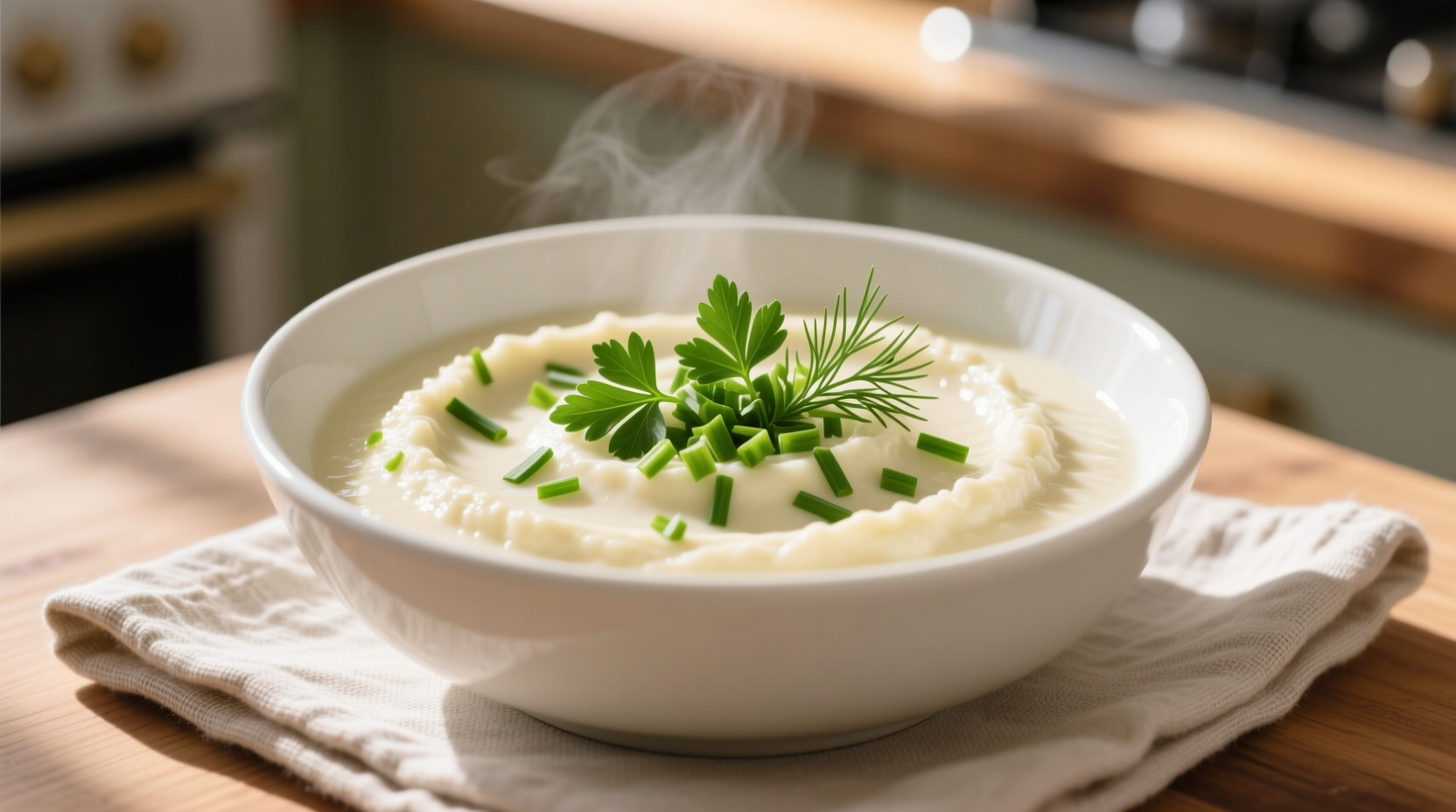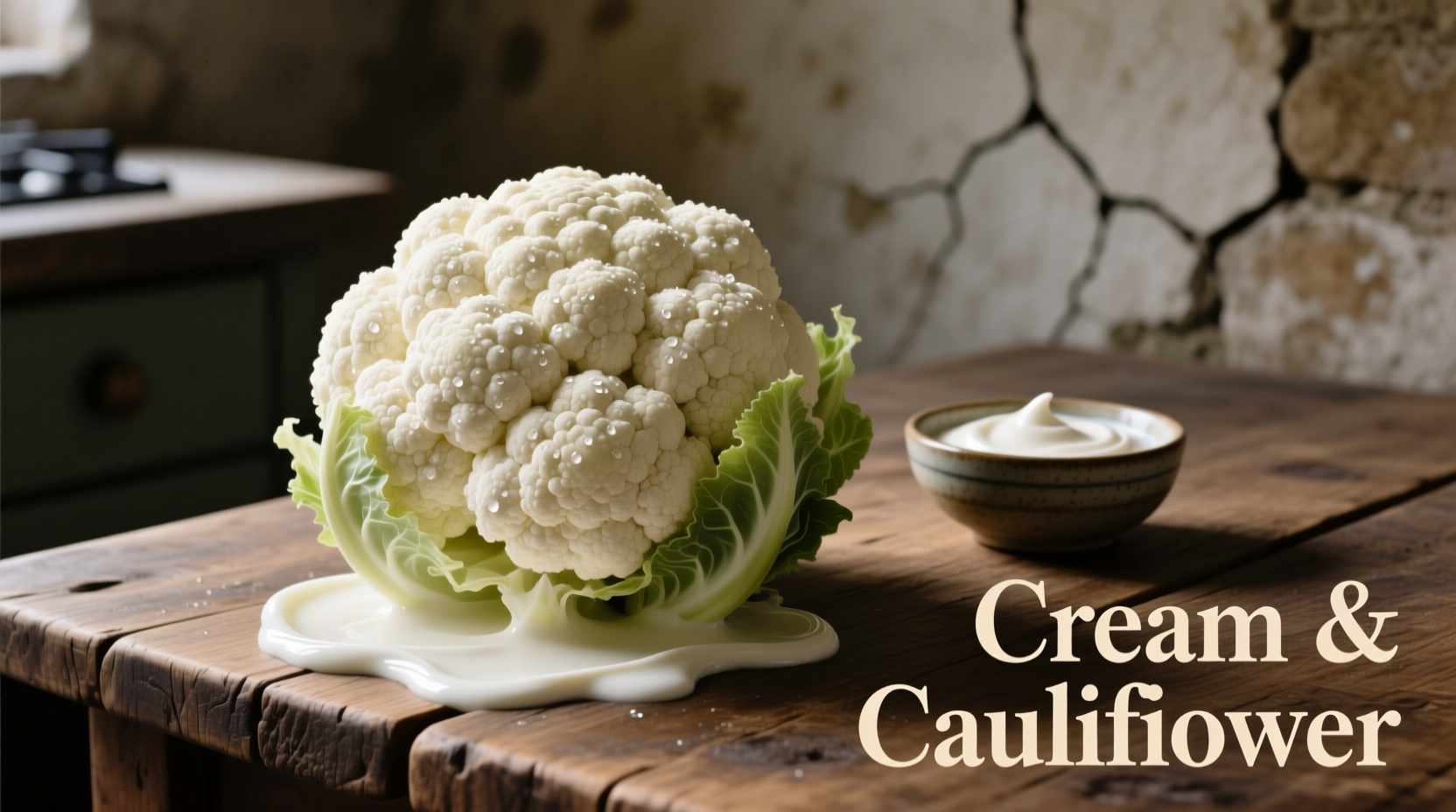Nothing beats the velvety texture and comforting flavor of a well-prepared cauliflower and cream dish. This versatile combination works equally well as a side dish, soup base, or even a main course for vegetarian diners. The magic happens when the natural sweetness of cauliflower meets the richness of cream, creating a harmonious balance that satisfies without overwhelming.
The Science Behind Perfect Cauliflower and Cream
Understanding the chemistry between these ingredients elevates your cooking from good to exceptional. Cauliflower contains sulfur compounds that mellow beautifully when cooked properly, while cream's fat content carries flavors and creates that signature smooth texture. The key is controlling moisture content - too much water dilutes the cream, while too little prevents proper blending.
According to research from the USDA FoodData Central, one cup of cooked cauliflower provides 77% of your daily vitamin C needs while containing just 25 calories. When combined with cream in proper proportions, you create a dish that's both nutritious and satisfying.
Essential Equipment and Ingredient Ratios
Professional results start with the right tools and measurements. You'll need:
- Heavy-bottomed saucepan (prevents scorching)
- Immersion blender or high-powered countertop blender
- Sharp chef's knife for even cauliflower cutting
- Measuring cups and spoons for precise ratios
| Preparation Method | Cauliflower:Cream Ratio | Texture Result | Best Use Case |
|---|---|---|---|
| Steaming + Blending | 2:1 | Silky smooth | Soup base, elegant side |
| Boiling + Draining | 1.5:1 | Slightly textured | Casseroles, gratins |
| Roasting + Blending | 3:1 | Rustic, caramelized | Main course, hearty meal |
Step-by-Step Preparation Guide
Follow these professional techniques for flawless results every time:
- Prep the cauliflower: Cut into uniform 1.5-inch florets. Uniform size ensures even cooking. Don't skip this step - uneven pieces lead to inconsistent texture.
- Choose your cooking method: Steaming preserves more nutrients than boiling. For enhanced flavor, roast florets at 400°F for 25 minutes before blending with cream.
- Heat the cream properly: Warm cream gently over medium-low heat. Never boil heavy cream as it can curdle. Add a splash of milk to stabilize if concerned about separation.
- Combine at the right temperature: Add warm cream to cooked cauliflower, not vice versa. This prevents shocking the cream and causing graininess.
- Blend to perfection: Use an immersion blender directly in the pot for smoothest results. Blend in upward motions to incorporate air for lighter texture.

Avoid These Common Mistakes
Even experienced cooks make these errors that ruin cauliflower and cream dishes:
- Overcooking the cauliflower: Results in mushy texture and sulfurous flavors. Cook just until fork-tender (12-15 minutes steaming).
- Adding cold cream to hot cauliflower: Causes cream to separate. Always warm cream first.
- Using low-fat dairy substitutes: Skim milk or non-dairy creams often lack the fat content needed for proper emulsification.
- Skipping the seasoning step: Salt the cooking water generously (like pasta water) to properly season the cauliflower from within.
Variations for Different Dietary Needs
This classic preparation adapts beautifully to various dietary requirements without sacrificing flavor:
- Dairy-free version: Use full-fat coconut milk instead of cream. Add 1 tsp nutritional yeast for cheesy notes.
- Lower calorie option: Replace half the cream with unsweetened almond milk and add 1 tbsp cornstarch for thickness.
- Flavor variations: Infuse cream with garlic, herbs, or spices before adding to cauliflower for customized dishes.
- Protein boost: Stir in 1/4 cup white beans after blending for added protein without changing texture.
When This Dish Works Best (And When It Doesn't)
Understanding the context boundaries helps you serve this dish appropriately:
- Ideal for: Fall and winter meals, vegetarian main courses, elegant dinner parties, healthy comfort food cravings
- Less suitable for: Summer dining (too rich in heat), strict keto diets (without modifications), quick weeknight meals if roasting first
- Perfect pairings: Roasted chicken, seared fish, crusty bread, green salads with vinaigrette
- Avoid pairing with: Other creamy dishes (creates flavor fatigue), strongly spiced foods (overwhelms delicate cauliflower)
Serving and Storage Tips
Maximize your culinary investment with these professional recommendations:
- Rest the finished dish for 5 minutes before serving to allow flavors to meld
- Garnish with fresh chives, cracked pepper, or a drizzle of truffle oil for visual appeal
- Store leftovers in airtight container for up to 3 days in refrigerator
- Reheat gently over low heat with a splash of milk to restore creaminess
- Freeze in portion-sized containers for up to 2 months (thaw overnight before reheating)











 浙公网安备
33010002000092号
浙公网安备
33010002000092号 浙B2-20120091-4
浙B2-20120091-4